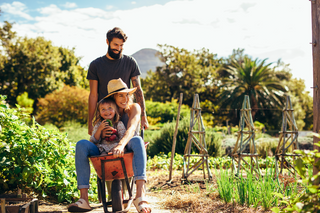How to Buy a Farm in Your 20s


The ability for young families to buy a farm and own a farm in their 20s, without inheriting, may seem almost impossible - but don't panic.
Things are changing and the rise of equity investments could be a great solution to not only get young families on the land, but provide an innovative succession option for farmers wanting to step back and for community groups seeking to rejuvenate their communities.
Currently, any young family with the vision to buy a farm for sale needs $5m. Websites that specialise in farms and rural properties for sale such as farmbuy.com provide the ideal place to start. No-one has that amount of capital and no bank is going to back them. This is one of the reasons why aging regional communities are going to continue to shrink because they aren’t able to attract and retain the best new young people.
It doesn’t have to be this way and the answers are in the hands of the current generation on the land. Farmers looking to step back could be playing a more pro-active role in helping new young families get established, and they can do so while still retaining their own ties to the land.
Many farmers don’t have children to pass their farm onto and don’t like the idea of selling and losing the connection with the farm they love. In these instances, equity investment arrangements might be a great way to ensure a positive outcome for themselves and a young family.
Equity arrangements involve a number of people joining together to become shareholders and mutually own the land as well as operations.
In order to understand how attractive equity investments are for young families, we need to understand their requirements and compare this option to other farm ownership models.
The requirements of new young farming families can be boiled down to the desire to buy a farm (part or whole), be the manager (the ability to call the shots) and have the support they need (advisors to help find and manage their farms).
The table summarises the suitability of different farming options in meeting these three requirements.
OptionOwnershipManagementSupportInherit★★★★★★★★★★★★★Loan & savings★★★★★★★★★Vendor finance★★★★★★★★★★★Lease ★★★★★Lease to buy★★★★★★★★★Share farm★★★★★★★★★★★★Farm Manager ★★★★★★★★★Equity★★★★★★★★★★★★★Cultivate Farms★★★★★★★★★★★★★★
Vendor finance was once a popular option for property transition and is a great way to achieve farm ownership without having to first get a loan. However, given the high price being achieved for property at the moment, retiring farmers are opting to sell on the open market.
Leasing land focuses the farmer on the operations only and can be a lucrative venture. However, most young people are determined to own the farm and therefore this option hasn’t been taken up as readily as other regions such as Europe.
Sharefarming is a means of cost and profit sharing, where the new farmer usually increases equity over time. It is prevalent in the dairy industry and should be expanded into all types of farming.
Cultivate Farms is a new social enterprise, which is an equity arrangement matching investors and retiring farmers with new farmers to own and operate the farm together. The Cultivate Farms model is a great option for existing farmers looking to pass on their land without completely losing the connection to the land they have cared for and love.
Author: Sam Marwood is co-founder of Cultivate Farms. For further information go to www.cultivatefarms.com or email Sam at sam@cultivatefarms.com.








